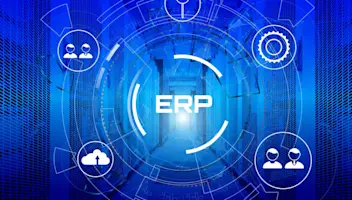Maximize ERP ROI: Beyond the Costs
Maximize ERP ROI: Beyond the Costs
Maximize ERP ROI: Beyond the Costs
9 Feb 2022
Ken Weygand
Are you thinking about implementing an enterprise resource planning (ERP) solution for your company? Or maybe you already have one, but you’d like to upgrade. Before you shortlist your vendors, you want to make sure that you will get the best return on investment (ROI) on the purchase. We won’t tell you in this article how to calculate ROI; instead, in the below post, we’re going to explain what factors to consider to maximize your ERP ROI now and in future.
We won’t go into detail in this article about how to calculate ROI—you can check out our previous blog for more information on that—instead, below we’re going to explain what factors to consider to maximize your ERP ROI now and in the future. As a refresher, there is a simple formula to calculate ROI:
ROI = [(Value of Investment – Cost of Investment) / Cost of investment] x 100%
Or
ROI = Net Benefits/Project Investment
While that formula is the industry standard, what you may not know is that it can take years to get an actual number. That doesn’t mean that an ERP isn’t a worthwhile investment—in general, most companies that purchase an ERP realize significant benefits in employee productivity and efficiency right out of the gate. It’s all about finding the right ERP for your industry.
ROI for an ERP system is far more than a simple formula. It’s about the value an ERP system will bring to your company.
The question remains whether your ERP will deliver the ROI you want. The answer—absolutely. It’s a matter of quantifying the ROI. Most companies that buy an ERP, particularly an industry-specific ERP, have found significant savings year-over-year. For example, some companies saw economic advantages within the first 6-12 months, including an improvement in gross margins, an increase in sales, and a marked increase in employee productivity.
Various independent studies by Forrester Consulting determined that most organizations would experience economic benefits between $3 and $5 million, which far outweighs the initial cost. They also ascertained that the total economic benefit to most companies was between $6 and $10 million. The payback period for investing in an ERP solution is about 16 months.
In this article, we are going to examine the various value factors you need to look at to maximize ROI on a new system, which will help you when making a purchasing decision. If you’d like more information on the steps to take for ERP implementation, be sure to check out this blog.
Factor 1. The Software Is Intuitive and Easy to Use
This isn’t a quantifiable factor—but staff retention is. It’s much cheaper to retain the staff you have than to hire and train new people. When you are talking with your ERP vendors, be sure to ask for a product demo. Look at the interfaces and the functionality. If it looks overly complex, it probably is. Think about the different roles within your organization, and make sure that the software has different user views for each function.
Likewise, make sure your vendor offers training on the system. Your IT team is going to have their hands full during the implementation process, so counting on them to do the heavy lifting during training just isn’t feasible. If you do need to hire outside help for training, be sure to factor that cost into the final ROI calculations. It’s also worth finding out if the vendor offers ongoing training opportunities; after all, the system is going to scale as you grow, and you may need new integrations. Your team will need to be trained on the integrations, and your vendor should be involved with your team for the lifetime of the product.
In addition, you want your team members to be fully invested in using the ERP. If performing their daily job functions is harder after implementation, they won’t use it. That’s a waste of both time and money. However, if your team can enter the right data in the right fields and see the information they need in real time, the better ROI you will realize.
Factor 2. Maintenance and Upgrades Are Included
This is where doing your research on your vendor candidates is crucial. Don’t forget about the costs for yearly maintenance and support. What type of support does your vendor provide? How much will your annual maintenance cost be? These expenses will factor into the total cost of the ERP.
Once it’s installed, your ERP isn’t just one-and-done after you go live. Your team needs to feel comfortable with the new solution. This means that your vendor should provide high-quality, effective, post go-live support and training for the lifetime of the software. Product support and training are imperative—it’s not an option. The only way you can ensure long-term success after ERP implementation is with a comprehensive maintenance and support plan.
After the ERP has gone live, your team might need assistance to adapt to new business processes. Make sure that is included in your support plan, and when issues do arise, be sure to document them so that your support team can help address them.
It’s critical to ask your vendor about maintenance and updates, as well. ERP maintenance refers to updates and repairs that keep your ERP software running perfectly. Your vendor should perform regular maintenance and updates; if you must pay for every support instance, you’ll have to factor in those costs.
If your vendor outsources their maintenance and support, that’s a problem—a third-party support team won’t know the product like a dedicated vendor team would. What you need to look for is a vendor, like Aptean, that offers a variety of ERP maintenance and support plans to fit any budget, all delivered by in-house experts.
Factor 3. Ease of Implementation
For most companies, using a cloud-based ERP system will get you the most bang for your buck. In addition, with many companies switching to remote work, a cloud ERP means that your team can access the system from anywhere and you won’t need additional IT support. For implementation purposes, cloud-based systems tend to be easier than on-premise solutions, and the security insurance and management falls to the vendor and not your IT teams.
Make sure that the system doesn’t require multiple customizations to work. Not only do multiple customizations lead to a headache for IT, coding errors and difficulty with upgrades make them problematic. A good rule of thumb is to add customizations only when it will make a significant difference, or if it will give you a competitive advantage. Ideally, you also want a vendor that offers a clear implementation path. If your vendor doesn’t perform their own implementations that’s a big red flag. If they outsource the implementation, it can cause issues later—namely, trying to get support if the implementation has problems (which it will).
The biggest issue to consider when adding in implementation costs is integration. All your systems need to talk to one another so that everyone can get the information they need with a few keystrokes. Work with your vendor from the early stages regarding data conversion and formatting. The right ERP will unify diverse processes and connect workflows. This plays a crucial role in the company’s success because it boosts productivity, efficiency and visibility, which leads to lower costs over time.
Factor 4. Your Vendor Is Familiar with Your Industry
It’s also a good idea to ask your vendor about their industry experience. If they specialize in healthcare and you run a food distribution business, they aren’t going to know about your industry. At Aptean, our specialized ERPs are designed for your industry. Our team of experts knows the tools you need, is familiar with your processes and knows about best practices for your particular vertical. When a vendor goes to begin implementation, you don’t want to have to train them on what you do—they should already know.
Your business is evolving, so your ERP system needs to be scalable so that it grows with you. Talk with them about all the features and tools that are included with the system and what modules are available as your company grows. For example, does the system have electronic data interchange (EDI) included, or is it a third-party, bolt-on tool? How about warehouse management and ecommerce tools? If these aren’t included with your package, it’s time to look at another vendor. After all, it’s silly to pay for an ERP and then have to shell out thousands more to get extra tools.
Many vendors offer these tools, but they are made by third parties. For example, if your EDI stops working, that means you’ll have to call that company to get it fixed, not your ERP vendor. This could be a frustrating exercise, as you’ll often see additional vendors playing the blame game with the ERP vendor. For peace of mind, look at ERPs that have all the tools you need integrated into the system already.
Aptean’s industry-specific ERPs have all the functionality your company needs already built into the system to master your challenges and complexities.
An ERP will help your operation in every aspect, but here are just some of the benefits.
Analytics and Insights: A Business Intelligence (BI) tool transforms data into actionable insights. This can help you make informed business decisions, create intelligent strategies and keep you abreast of sales trends. BI easily condenses data into charts, graphs, maps, reports and summaries to help you understand how your business is performing.
Reduced Operational Costs: An ERP solution automates many business processes and makes them more efficient. The right ERP minimizes shortages and interruptions, reduces material and labor costs and lowers administrative costs, which improves your bottom line.
Improved Production: ERP software can help lower costs through streamlined processes, reducing data redundancy due to company-wide visibility. You’ll get improved, consistent data, and all departments across the organization will have access.
At the end of the day, calculating ROI on an ERP is about the value it brings to your company, whether it’s employee satisfaction, efficiency or reducing costs. If you think that the costs of a new system are beyond your reach right now, think about the savings in operational costs over the life of the product. Think about the financial benefits that an ERP will bring. Think about happier employees and more satisfied customers.
The returns, both financial and environmental, will far outweigh the initial outlay.
Are you ready to start increasing visibility, efficiency and profits in your business? Are you ready to learn more about an ERP that will give you a solid ROI? Contact one of Aptean’s specialists today or request an industry-specific ERP demo.
Related Articles


Discover industry-tailored software built by the experts
With deep technical know-how and a commitment to innovation, we deliver tailored software to businesses like yours. Reach out today for your free, no-obligation consultation with an industry expert.






